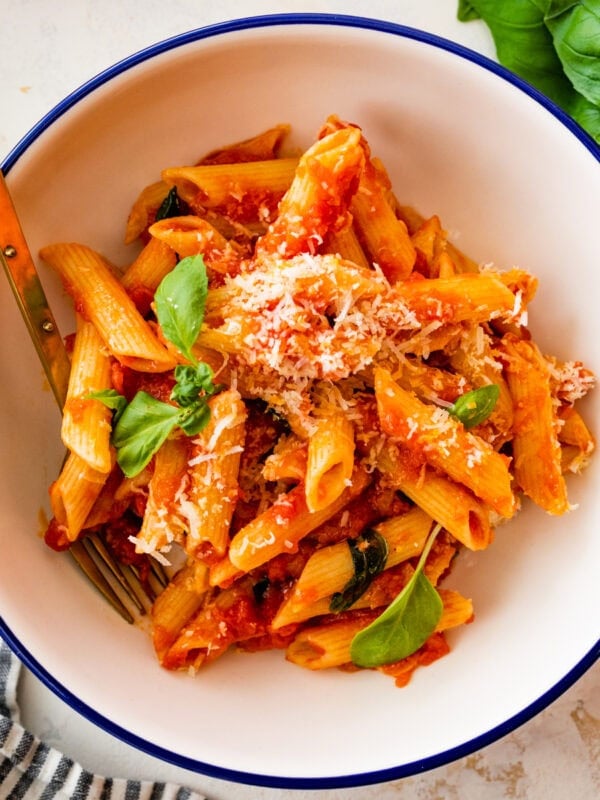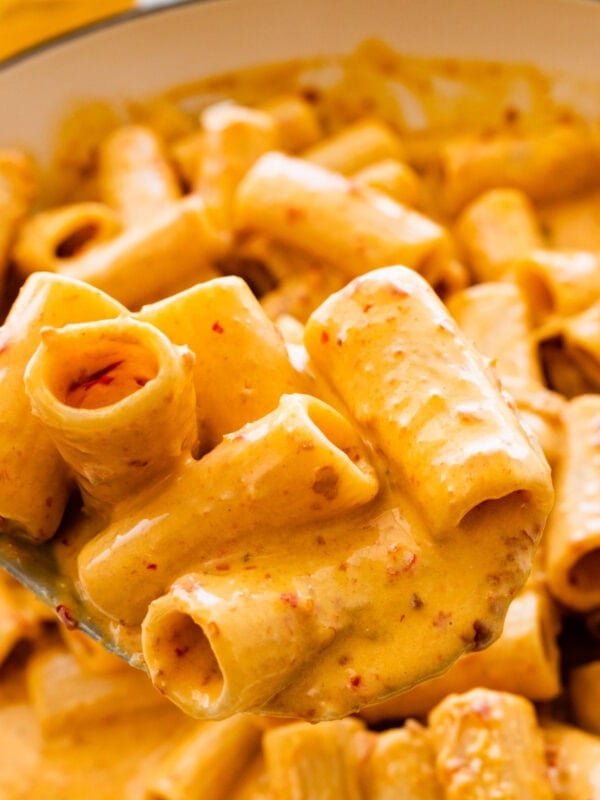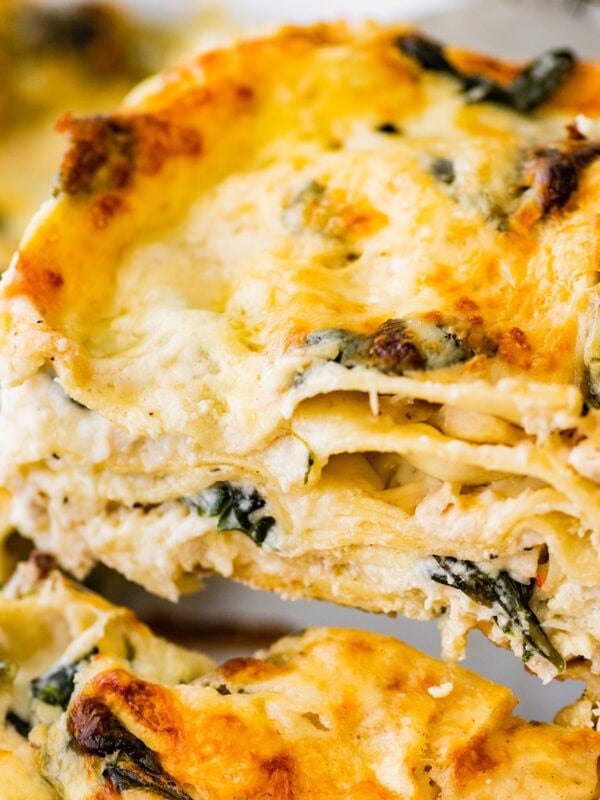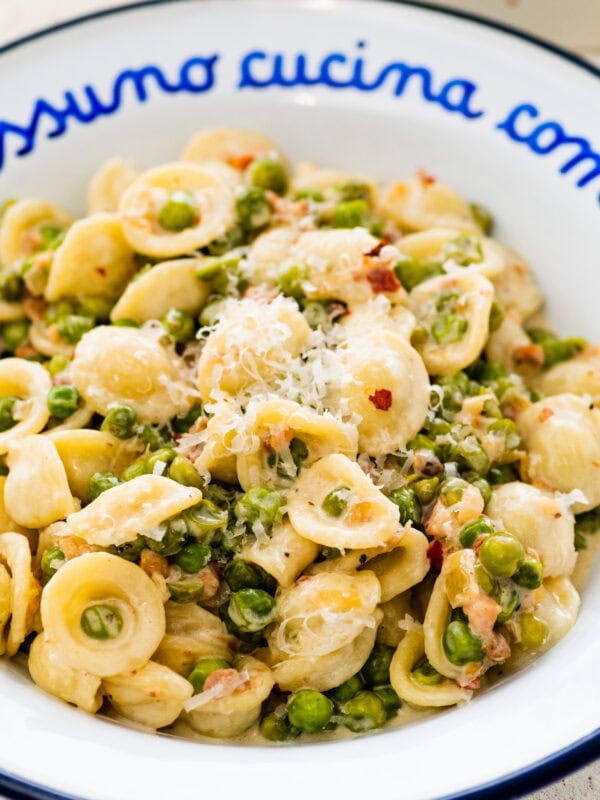This post may contain affiliate links. Please read our disclosure policy.
If you’ve ever encountered a fiery red, soft, and spicy sausage paste tucked into a pasta dish, spread on toast, or melted onto a crispy pizza crust, you may have wondered: What is nduja? Let’s break it down for you!
Try my creamy Nduja pasta sauce and Nduja ricotta toast.
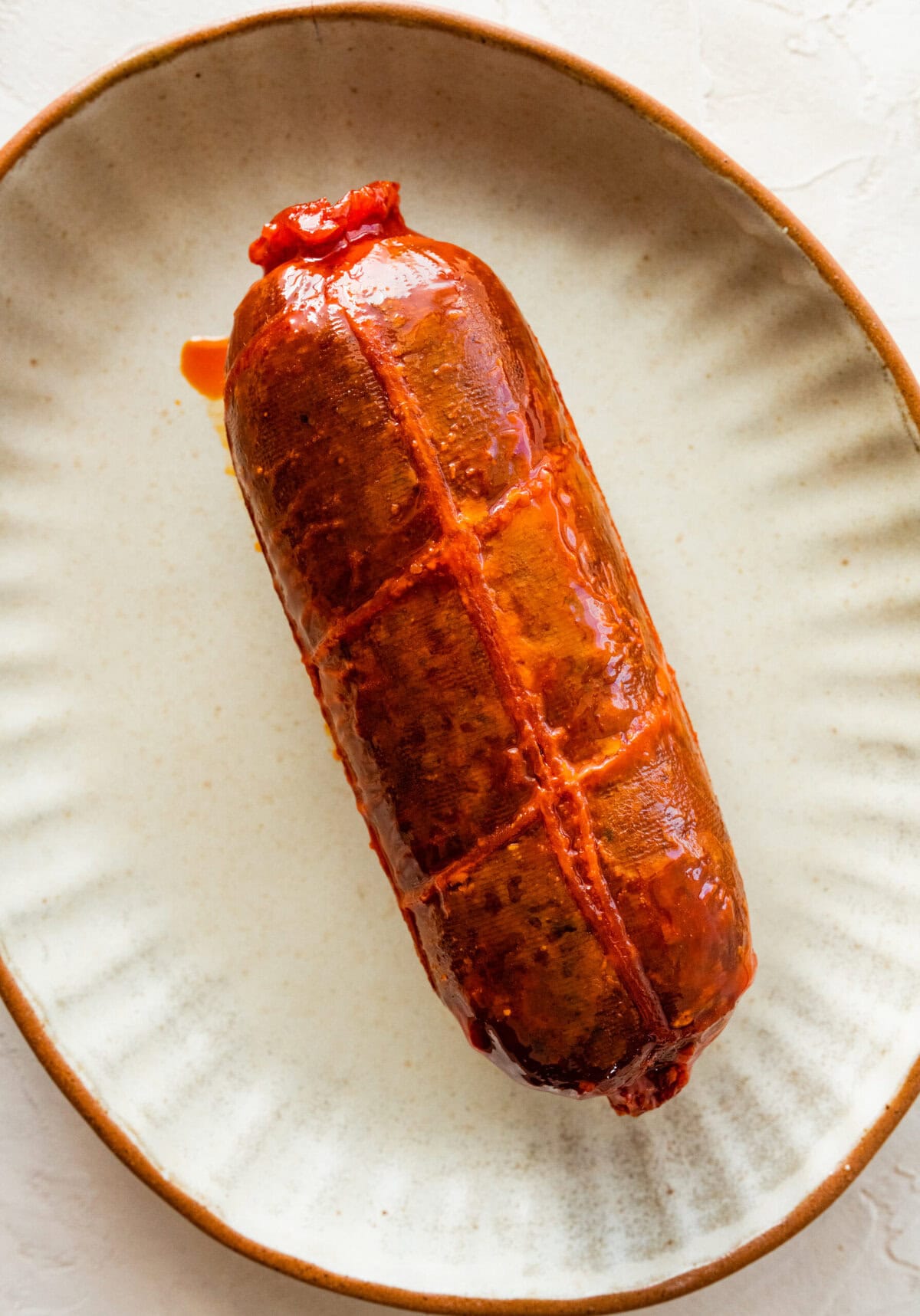
What is Nduja?
Nduja is a spicy spreadable pork salami made with pork fat, belly, pork shoulder jowl, lean cuts of meat, and plenty of Calabrian chilies. It’s fermented and then smoked, resulting in its signature deep red hue and intense, smoky flavor. What sets nduja apart is its spreadable texture—think of it as a meaty spicy chili paste with depth. It’s often compared to French andouille sausage but is far softer, spicier, and uniquely Italian.
Traditionally made in Calabria, Italy, nduja originated as a peasant food, using every part of the animal and preserving it with local Calabrian chili peppers and sea salt.
Today, it’s become a gourmet ingredient that’s showing up everywhere, from high-end pizza toppings to bold pasta sauces. It’s one of my “secret” Italian ingredients I love to use. People who aren’t familiar may ask: “Yum, what is that delicious flavor?”. It’s Nduja!
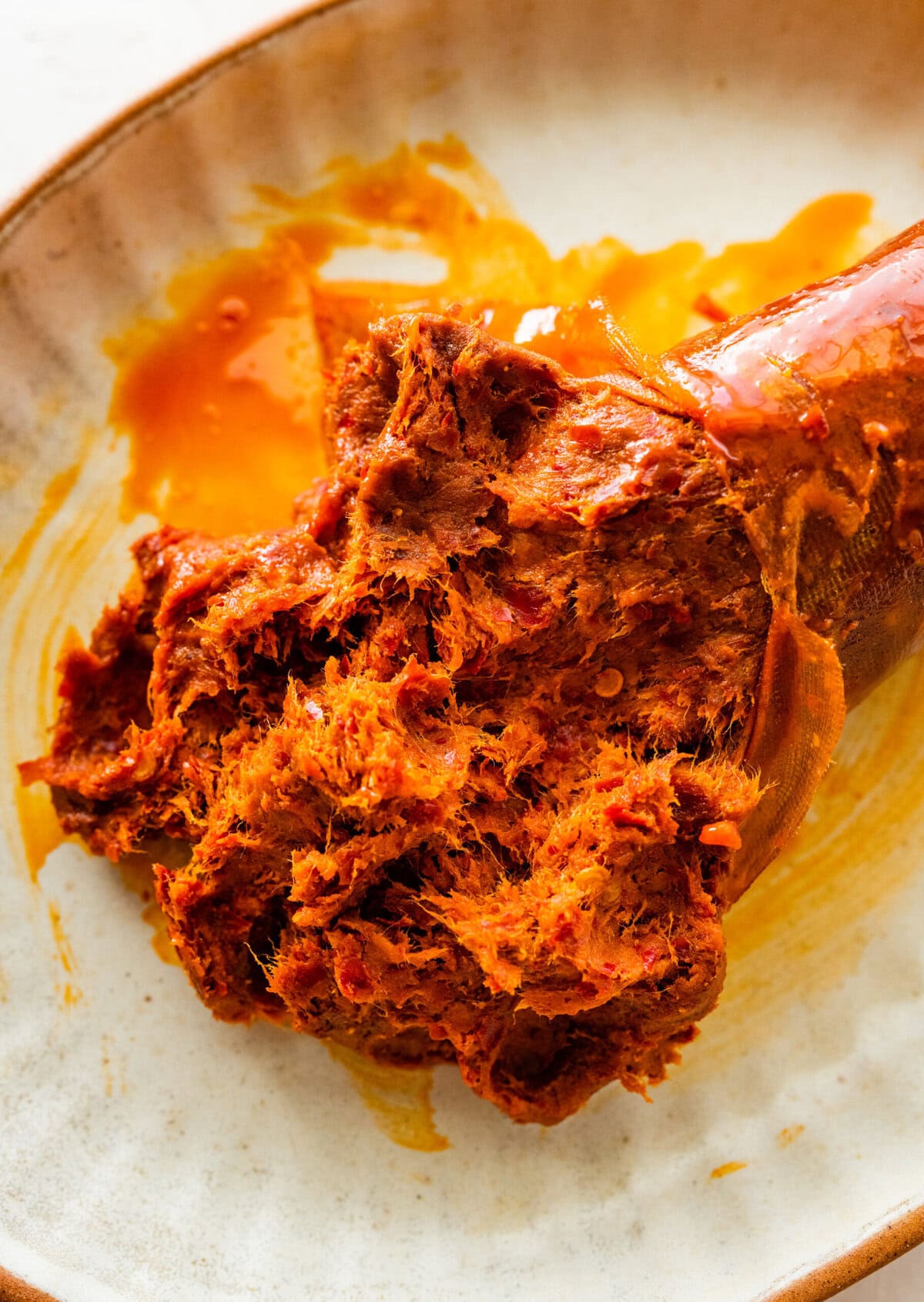
How Do You Pronounce Nduja?
It’s one of those words that looks tricky but is easy once you know- it is pronounced “en-doo-ya.” The “n” is silent in Italian, and you glide right into the “doo.” Say it confidently—it’s a word that deserves to be heard often in your kitchen!
Origins
Nduja originated in the early 1800s in Calabria, Italy, specifically from the town of Spilinga in the Vibo Valentia province. This region is known for its love of hot peppers, which gives nduja its unmistakable heat. Like many traditional Italian foods, nduja was born out of necessity, crafted by farmers and families who used every bit of pork and preserved it with salt and spice.
It’s one of the most iconic foods from the regions of Italy that value bold, simple, and resourceful cooking.
Where To Buy Nduja & What To Look For
You can find it at specialty Italian markets, gourmet grocery stores, and online. Look for versions that list Calabrian chilies as a key ingredient, and make sure they are made in Italy or follow the traditional method. It’s soft and spreadable at room temperature, with a rich red color and aromatic, smoky scent.
Here are a few tips when shopping:
- Check the ingredients—simple is best: pork, chili pepper, and salt. That’s it!
- If it’s imported from Calabria, Italy, that’s a great sign of authenticity.
- Look for it in jars, vacuum-packed nduja sausage form (my preferred way to purchase it), or even in pre-portioned tubs for easy spreading.
Best Way to Store It: Once opened, keep nduja in an airtight container in the refrigerator. For more extended storage, freeze in small portions and thaw as needed.
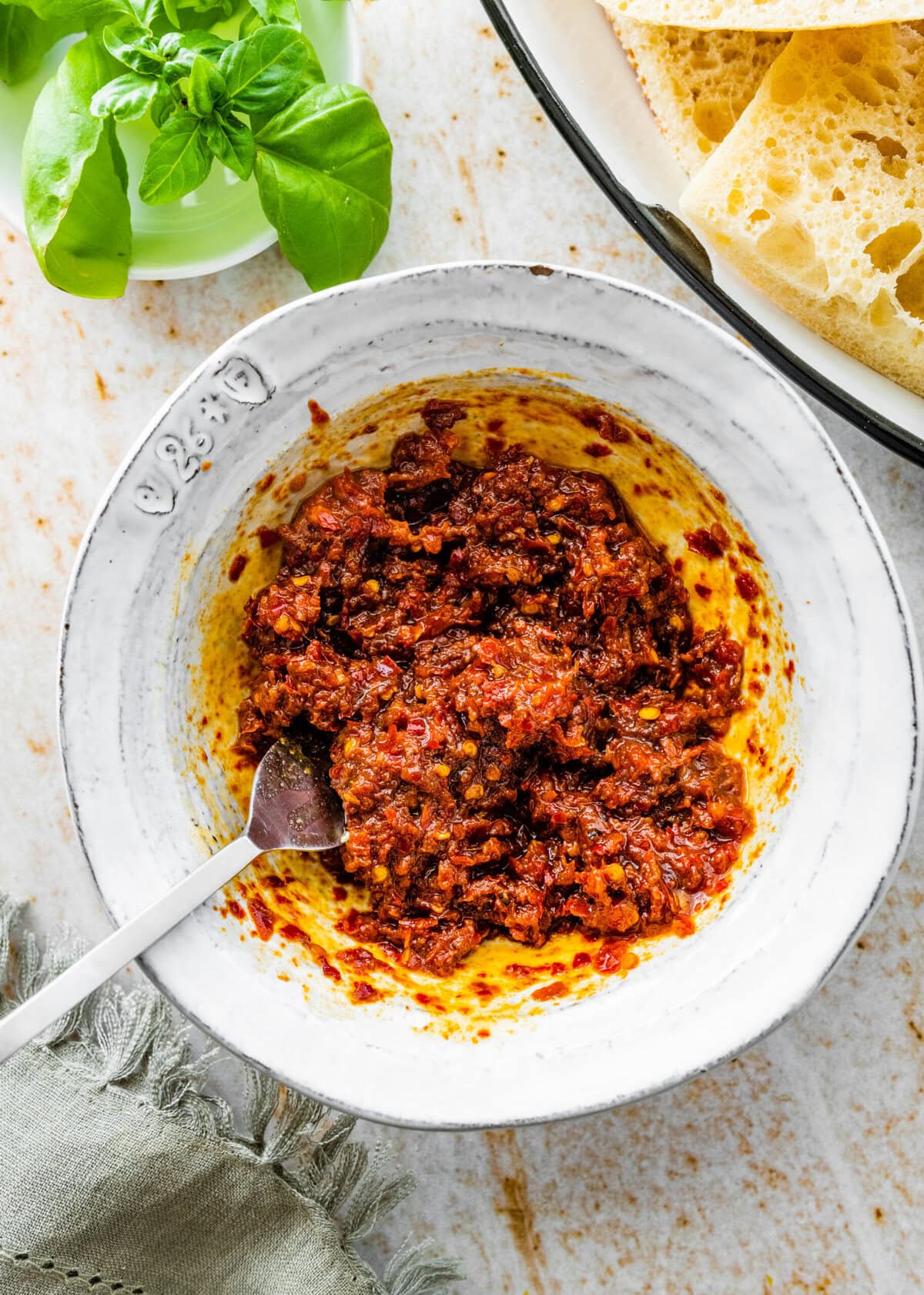
FAQ’s
Nope! Nduja is already cured and fermented, so it’s safe to eat as is—spread it on warm crusty bread, stir into warm dishes, or dollop onto pizza. That said, cooking with nduja deepens its flavor and mellows the heat slightly.
Unopened nduja can last several months in the fridge or pantry (check the label), but once opened, keep it refrigerated and use it within 2–3 weeks. It also freezes beautifully!
Thanks to those Calabrian chili peppers, it has a spicy flavor, but it’s a warm, rounded heat—not a burn-your-mouth spice. If you love a bit of fire, you’ll be hooked. Sensitive to spice? A little goes a long way! You can always serve it with cheese or bread to mellow the spice and create a nice balance.
It’s a type of salami, but unlike traditional dry salami, nduja is soft and spreadable, thanks to its high-fat content and the way it’s fermented and cured.
Let it sit at room temperature for 10–15 minutes. To make it easier to spread, you can also warm it slightly in a pan or mix it with olive oil.
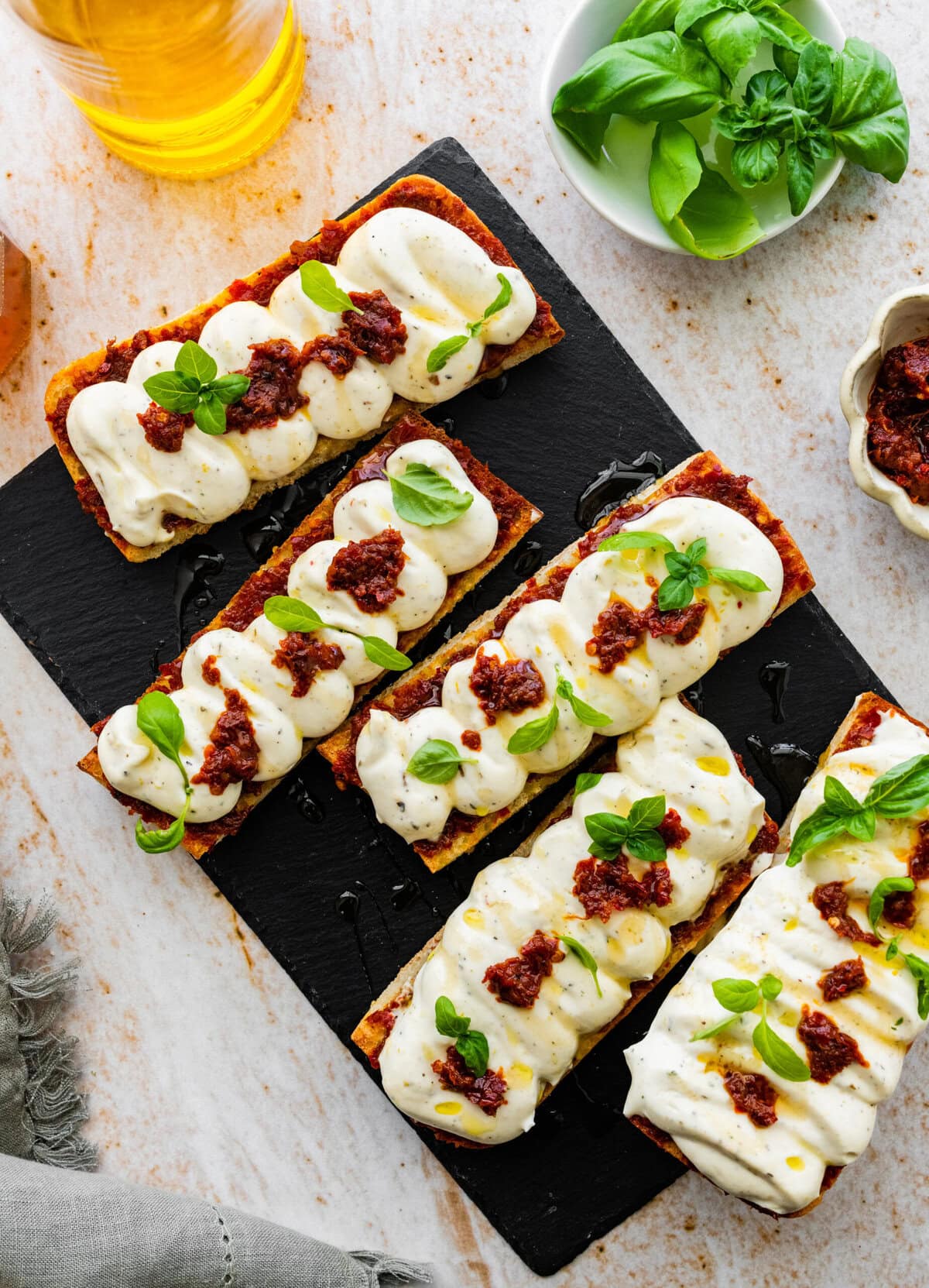
Cooking With Nduja (How To Use It)
This is where the magic happens. Nduja melts beautifully into hot dishes, adding an instant depth and fiery punch that elevates everything it touches.
Here are a few delicious ways to use it:
- Pizza topping: Dot it on top of the mozzarella before baking for bursts of flavor. Try it on my Neapolitan pizza or Roman pinsa.
- Pasta sauces: Stir into a simple tomato sauce, or melt with garlic and olive oil for a spicy twist on aglio e olio pasta. Try my creamy nduja pasta sauce.
- Eggs and frittatas: For a brunch upgrade, swirl a spoonful into scrambled eggs or a potato frittata. Try it with my eggs in purgatory and spinach quiche.
- Bruschetta with mozzarella or crostini: Spread it on toasted bread with a drizzle of honey or a sprinkle of ricotta. Here is the recipe for my Nduja ricotta toast.
- Meat dishes: Use it as a rub or stuffing for baked whole chicken or pork to add that unmistakable depth of flavor from the smoky heat.
Once you start cooking with nduja, it’s hard to stop. It’s bold, spicy, and beautifully Italian—just the way we like it.
You will also love my Pasta al forno recipe, Italian sausage sandwich, and Italian sausage pasta.
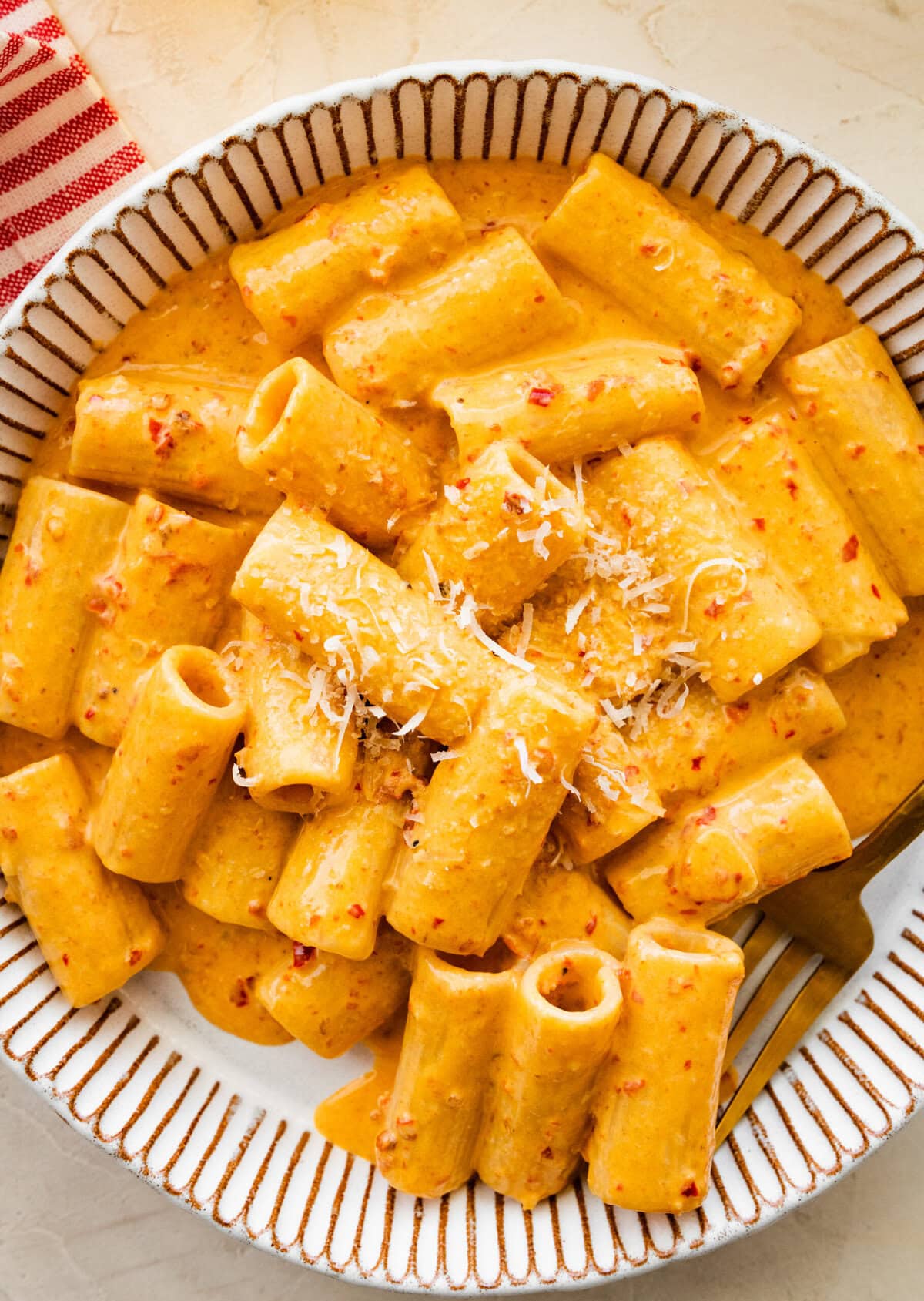
💙 MADE THIS RECIPE AND LOVED IT? 💙 Please leave a ⭐️STAR rating and COMMENT below- I love connecting with you! Tag me with your creations on Instagram and find me on Pinterest.
